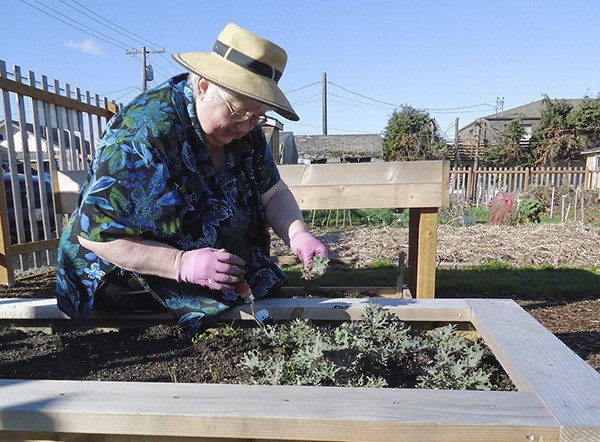A lot of properties in Clallam County are plagued with soil that may not be conducive to growing vegetables. Instead of giving up on gardening, consider building raised beds.
Raised beds offer many advantages:
• High quality soil can be used to fill the beds resulting in optimal plant growth.
• The soil drains and warms more quickly in the spring, allowing earlier planting than in traditional in-ground gardens.
• Less bending is required to tend raised beds, making gardening easier for those with back pain or mobility problems.
• If you tend the garden from outside the bed, yield per square foot of garden increases because valuable growing space is not used for walking paths.
• If you avoid stepping on the beds, soil compaction is less of an issue, improving overall plant health.
Building raised beds
Choosing the perfect site for your raised bed is an important step. Place the garden in an area where it will receive at least 6 hours of sunlight each day.
When possible, make sure your bed is in close proximity to a water source.
Before building the frame, line the bottom of the bed with chicken wire. This will prevent unwanted pests, like voles, from burrowing under the framework and munching on the roots of your plants.
There are a variety of materials from which you can choose to build a raised bed. Bricks or concrete blocks can be inexpensive options if you are able to reuse materials that pre-exist on your property.
Various types of lumber are the most commonly used materials. Untreated lumber, such as cedar, will last for many years but eventually will decay. Treated lumber will withstand the moisture better, but its use for growing vegetables has been controversial. If you have concerns with your vegetables being grown in proximity to the chemicals used to treat the lumber, you can line the beds with polyethylene plastic or choose another framing material.
In general, raised beds should be less than 4 feet wide if they can be approached from all sides.
If a bed is longer than 6 feet, the sides should be staked or fastened together every 4-6 feet for support.
Filling with soil
If you are using soil already on your property to fill your raised bed, replace at least a third of the bulk with compost. Compost is a great source of micronutrients and beneficial organisms that will optimize the growth of your plants. When adding compost initially, mix all of the soil components together to ensure a well-blended mix.
If you need to purchase soil for your bed, choose a reputable source and ask to see the soil analysis or recipe. Go for a product that is loose and crumbly, screened for rocks and roots and at least 98 percent guaranteed weed-free.
Yearly maintenance
As with in-ground gardens, incorporate organic matter annually and have a soil test done every two to three years so you can amend the soil according to the recommendations of the test.
The Clallam County Conservation District has a low-cost soil testing program for county residents.
If you are looking for a way to grow a thriving vegetable garden, consider adding raised beds to your property and reap their many rewards.
For more gardening information, attend the Brown Bag Series at the Clallam County Courthouse. These free educational events are held at noon on the second and fourth Thursday of each month.
On April 14, veteran Master Gardener John Holmes will talk about installing drip irrigation in your garden.
Pearl of Wisdom
Raised beds tend to dry out faster than in-ground gardens, especially if the walls are porous. Check beds frequently and water when the soil is dry 2 inches below the surface; a typical raised bed will require 1-2 inches of water weekly.
Applying a thick layer of mulch around your plants will help minimize loss of moisture.
Lorrie Hamilton is a Clallam County Master Gardener Program coordinator.




